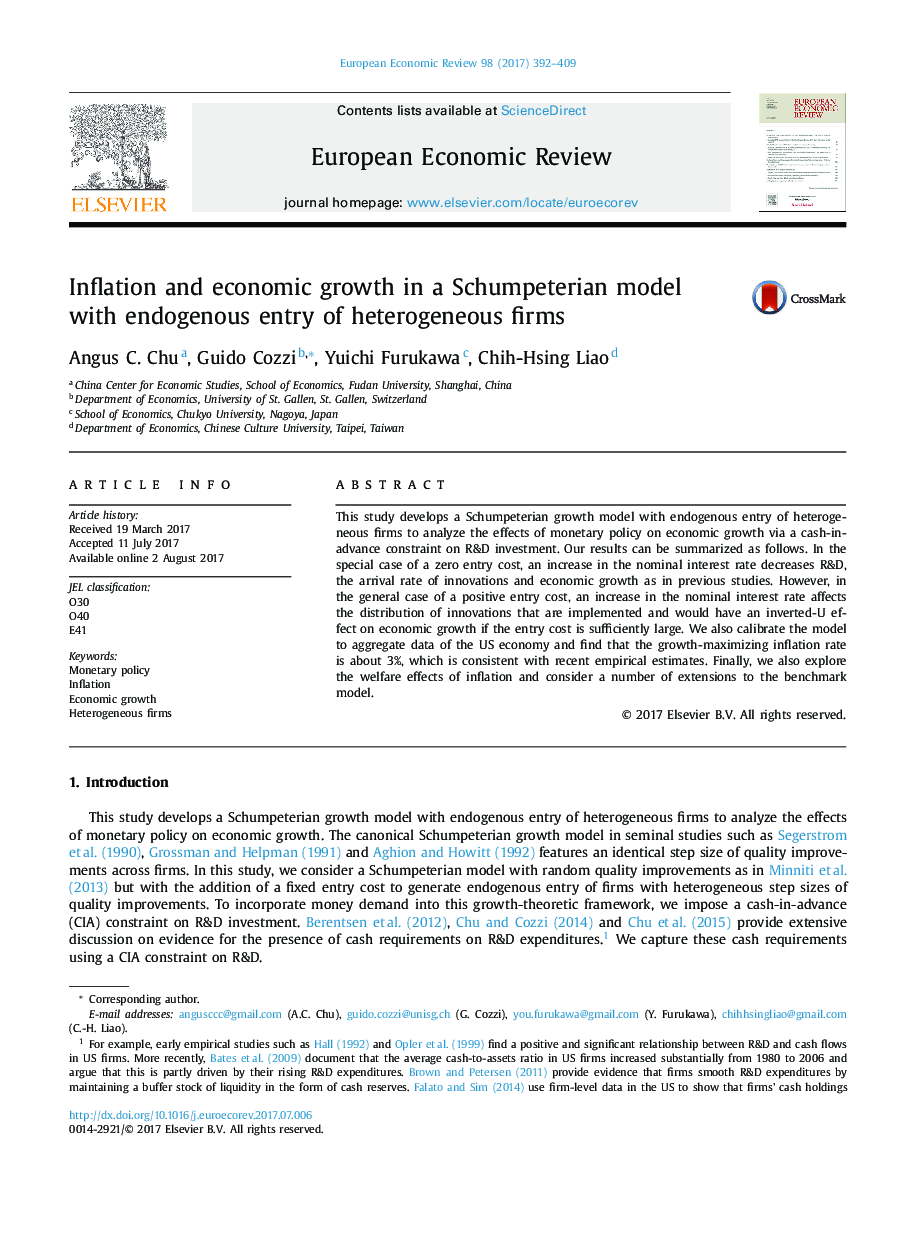| Article ID | Journal | Published Year | Pages | File Type |
|---|---|---|---|---|
| 5066289 | European Economic Review | 2017 | 18 Pages |
This study develops a Schumpeterian growth model with endogenous entry of heterogeneous firms to analyze the effects of monetary policy on economic growth via a cash-in-advance constraint on R&D investment. Our results can be summarized as follows. In the special case of a zero entry cost, an increase in the nominal interest rate decreases R&D, the arrival rate of innovations and economic growth as in previous studies. However, in the general case of a positive entry cost, an increase in the nominal interest rate affects the distribution of innovations that are implemented and would have an inverted-U effect on economic growth if the entry cost is sufficiently large. We also calibrate the model to aggregate data of the US economy and find that the growth-maximizing inflation rate is about 3%, which is consistent with recent empirical estimates. Finally, we also explore the welfare effects of inflation and consider a number of extensions to the benchmark model.
